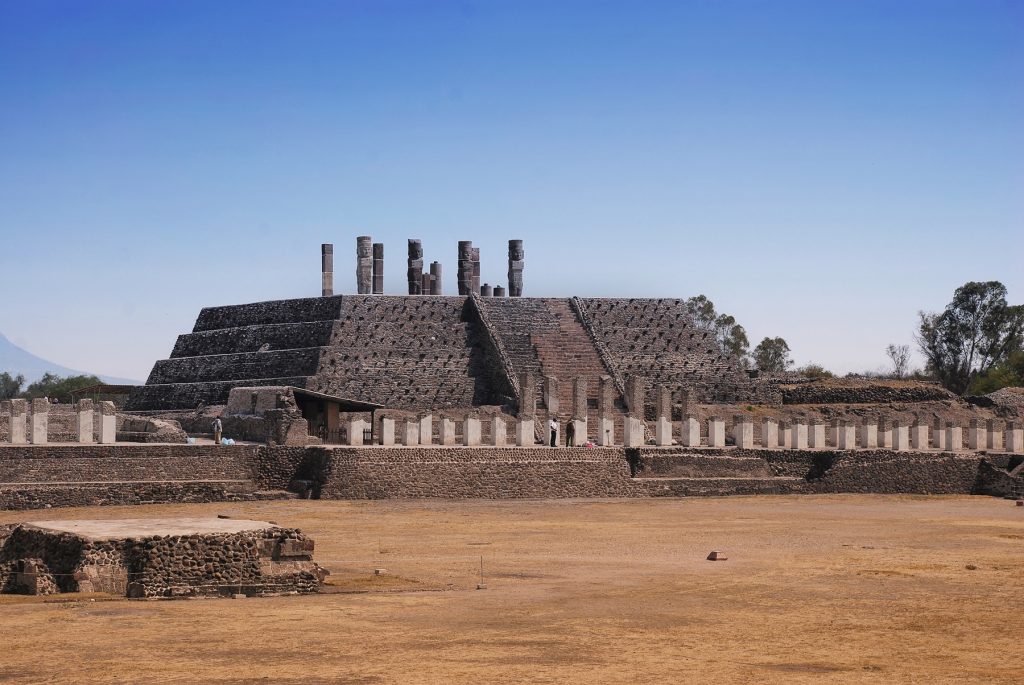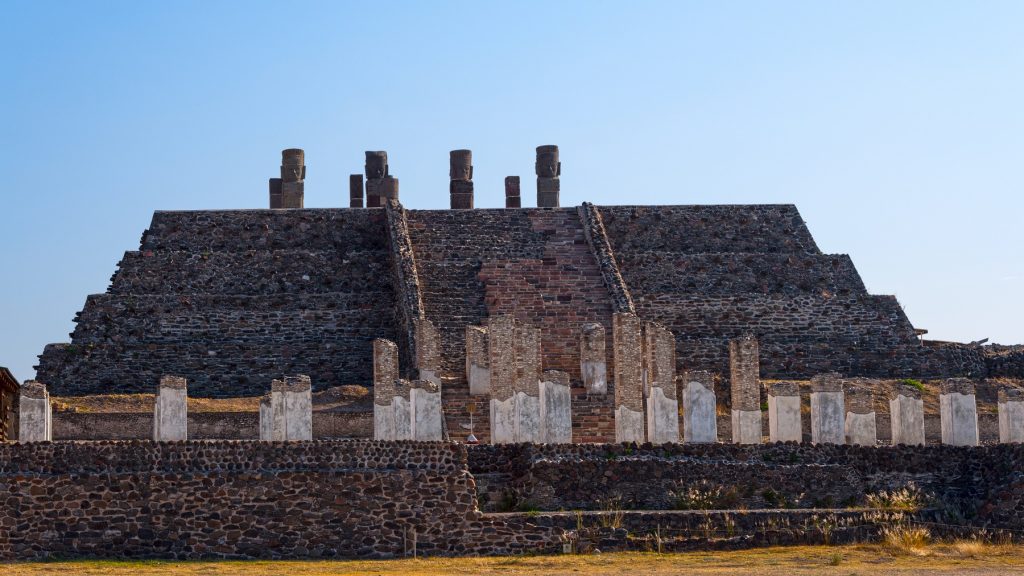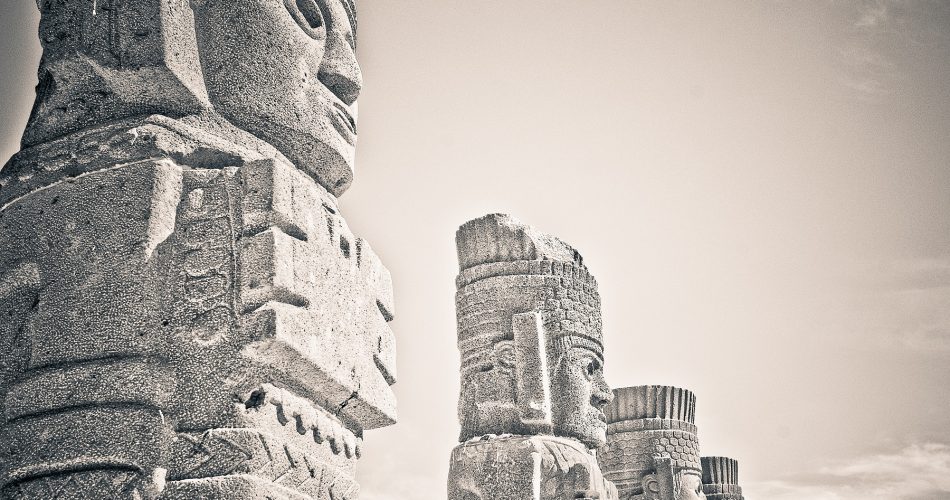- The ancient city of Tula is thought to have been the capital of the mighty Toltec Empire.
- Although Tula is home to various awe-striking monuments, its central monument is a Step Pyramid, dubbed the Pyramid of Quetzalcoatl or the pyramid of the Morning Star.
Present-day Mexico city was the heart of Mesoamerica. It was there, thousands of years ago, where through a long, rich, and plentiful history, some of the greatest civilizations on the surface of the planet emerged. One such culture was a people known as the Toltec, a Nahuatl speaking tribe native to Central Mexico.
One of their most important cities was Tula. Today, the archeological zone of Tula shows the traces of a long-lost civilization that reached its height as the capital of the mighty Toltec Empire between the fall of the Pyramid-building empire of Teotihuacan and the rise of the Aztec capital of Tenochtitlan.
The archaeological site encompassing the ancient city is located in the modern-day city of Tula de Allende, in the southwest of the Mexican state of Hidalgo, northwest of Mexico City and Teotihuacan. The archeological site is large and consists of a museum where many of the ancient city’s artifacts are on exhibit, and two settlements dubbed Tula Chico and Tula Grande. But its most important attraction is a pyramid known as the Temple of Quetzalcoatl, the feathered serpent. This is somewhat a unique structure because, at its summit, the builders erected a series of basalt columns with the shape of the Toltec warriors. Each column has a height of four meters (13 ft).

The ancient city bears evidence that its founders were great astronomers, but also mighty warriors. Archaeological surveys reveal the city to be aligned at 17 degrees east of true north. Its temples, plazas, and buildings are decorated with clear motifs of war and sacrifice. Many illustrations at the site depict warriors as jaguars and eagles consuming human hearts. In addition, many illustrations depict serpents eating humans. Although the entire city is awe-striking, the main structures of the ceremonial center are two pyramids both of which feature Tula’s famous “Atlas figures.”
Tula’s ceremonial center was gigantic and helps us better understand the history of the ancient city. Its numerous architectural innovations attest to numerous societal changes throughout the history of the site. The central plaza at Tula is so massive that it accommodated as many as 100,000 people. Long roofed meeting halls flank the central plaza. The architecture of the plaza its halls and benches suggests a transition in types of rituals: from a few people in closed spaces to massive ceremonies performed in the open, meant to be viewed by the many.
The entire city is beautiful, and its countless structures speak. Although not literally, they are evidence of times when great empires walked the surface of Northern and Central America. These mighty civilizations were not only fearless warriors but self-thought astronomers who excelled in their study of the stars. More importantly, and as Tula stands evidence of, these ancient cultures were mighty warriors, and sacrifice to the gods was central in their society. In the ceremonies at the central plaza at Tula, the city’s warriors were of great importance during the ceremonies.

But if we have to pick out one monument that stands out the most, I personally would go for the Pyramid of Quetzalcoatl, also known as the Pyramid of the Morning Star. Among experts, the structure is known as pyramid b. Essentially, what we are looking at here is a Step Pyramid composed of five distinct tiers. The monument bears certain similarities to the Temple of the Warriors at Chichen Itza, but also other monuments, some of which stand at Teotihuacan.
The similarities between the pyramids at Tula and the temple of Warriors at Chichen Itza suggests that Tula may have been so powerful that its influence reached parts of the Yucatan Peninsula. Although it is very unlikely that they were engaged in war, it is possible that Tula and Chichen Itza developed a powerful trading network, something that could explain some of the architectural similarities.
Tula’s main pyramid was topped by four massive columns carved resembling mighty Toltec warriors. These columns once supported the roof of a temple that was built atop the pyramid. The statues atop the pyramid are of curious design. These are made out of basalt, measuring four meters in height, and are depicted with a spear thrower, also known as an atlatl. The Toltec warriors are also depicted with a butterfly-shaped chest plate, and a backplate that was carved in the shape of a solar disk, a sign that suggests that the warriors highly regarded the sun, most likely because they saw it as a symbol of power and might.
The Monument was surrounded by a structure known as the Coatepantli , or serpent wall, which is thought to have later influenced the architecture on the Aztec capital of Tenochtitlan.
The entire layout of Tula, its pyramids, and worship of the feathered serpent had great influence in the development of the Aztec Empire, and numerous Aztec city-states looked upon Tula to develop their urban centers.

